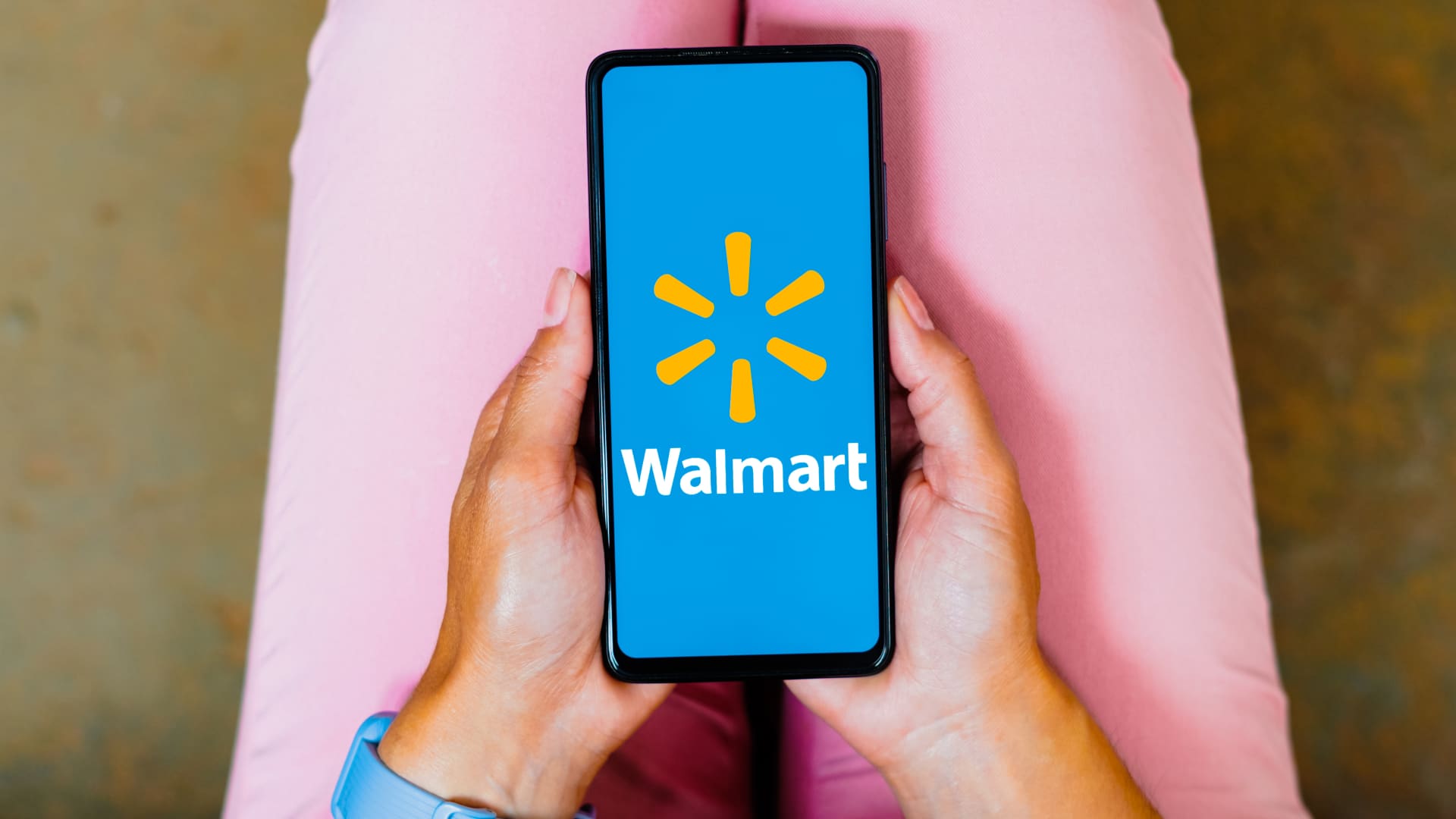Walmart is reducing the cost of its subscription service for Americans who receive food stamps and some other types of government assistance, as it pushes to grow the program and notices more price sensitivity among shoppers.
The nation’s largest retailer said Thursday that it will cut the price of Walmart+ in half for those low-income households. Starting July 20, customers who are eligible for qualifying government aid can pay $49 a year or $6.47 on a monthly basis for Walmart+. That compares to the typical price of $98 a year or $12.95 if members pay monthly.
related investing news
For Walmart, the move could help capture and retain the swath of shoppers who may be quicker to skip or cancel services with recurring fees or turn to another retailer like a dollar store. Walmart has not disclosed total Walmart+ subscribers, but said about a quarter of its members get government assistance. It declined to say how that compares to the rest of its customer base.
On Walmart’s most recent earnings call in May, CEO Doug McMillon said customers are feeling the burden of higher grocery bills. He called persistent inflation, especially for food, “one of the key factors creating uncertainty for us in the back half of the year.”
Many families struggling to afford groceries are also receiving less generous Supplemental Nutrition Assistance Program benefits, formerly known as food stamps, after pandemic-related emergency funding ended earlier this year.
Walmart’s discounted price could put Walmart+ within reach of more shoppers — if they are willing to pay the fee. More than 41 million Americans received funding for food through the SNAP in 2022, according to the United States Department of Agriculture. That number does not include people who receive another type of government aid who may qualify for the discount. Most of the types of aid on the list, such as Medicaid and the National School Lunch Program, help families with children or those who are food insecure.
Walmart launched Walmart+ in 2020 to hook shoppers and increase the likelihood of them spending more on its website and in stores. It’s similar to Amazon Prime, and follows the playbook of membership-based warehouses, such as Costco and Walmart-owned Sam’s Club
Members of Walmart+ get free shipping, fuel discounts, access to streaming service Paramount+ and unlimited deliveries of online orders of $35 or more from the store to their doorstep.
The program appears to have gained some traction, but Walmart is still looking for ways to increase its uptake as it lags behind Prime. Its membership count is about 12 million, according to estimates by market researcher Consumer Intelligence Research Partners based on quarterly consumer surveys and industry research.
Some others peg the count higher. In a recent estimate, Morgan Stanley said Walmart+ has reached approximately 21.5 million members, or roughly 17% of household penetration in the U.S.
Either figure, however, makes up only a small fraction of Amazon Prime’s estimated 170 million memberships in the U.S., according to CIRP.
Amazon has a similar discounted fee for low-income households that qualify for government assistance and sign up for Prime. It charges $6.99 per month, instead of the full $14.99 per month. The lower fee started in 2017.
Along with the Walmart+ discounted price, Walmart said it has made it easier for families receiving food aid to shop online. It said it now accepts SNAP online in all 50 states. Customers who qualify for SNAP can add their benefits card to Walmart’s app or website, so they can buy groceries online or use curbside pickup.
Amazon accepts SNAP in every state but Alaska.
For Walmart, expanding the subscriber base of Walmart+ comes with other benefits. Not only do monthly and annual fees provide a stream of revenue, but the program allows the retailer to better understand customers’ preferences and purchases.
It can use those insights to support its analytics tool, Walmart Luminate, which it sells to clients or support its growing advertising business, Walmart Connect.


